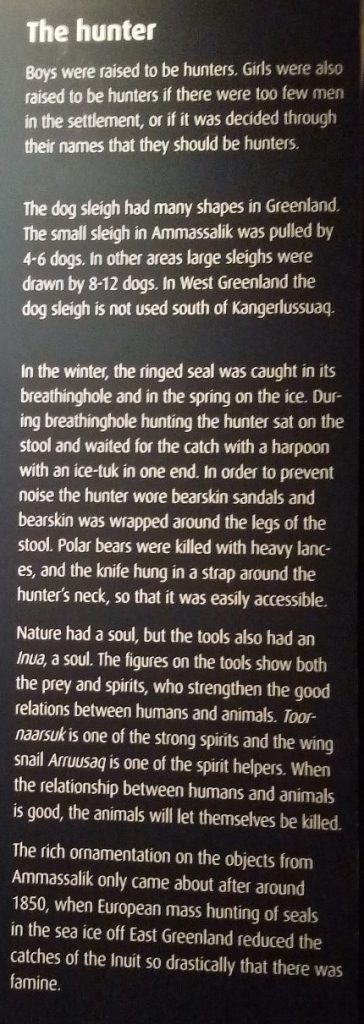by Sofia Emmanouela Theodorou, Filippo Xausa, Stephany B. Mazon, Riikka Väänänen and Vilma Kangasaho
July 12, 2016
Greenland is an isolated place with very challenging conditions which pose a challenge to the survival of every human. The first humans arrived in Greenland in 4500BP, and since that a culture based on fishing and hunting was developed. Today, both activities are the main source of nourishment and income for the Greenlanders.
On the other hand, climate change impacts the humans societies How is a more rapid change in climate affecting the people in the Arctic? To find out we went to Nuuk the capital of Greenland and interviewed the advisor of the labor union SIK, Julie Rademacher.
SIK is the largest labor union in Greenland with circa 5000 members. The headquarters are in Nuuk, but local offices are spread all over Greenland. The main occupancies of Greenlanders are traditionally fishing and hunting accounting for 88% of the export economy and due to recent discoveries mining has become a main source of income as well. SIK covers most of the workers in Greenland, national and international.

SIK has a strong voice in public debates. One of the future targets is to reach 10.000 members all over Greenland as well as to raise funding in order to establish an independent union able to organize stronger strikes. International collaboration with other labor unions is ongoing. SIK ask for advices from other labor unions which are experts on the subject of interest. For instance, in the question whether or not the uranium should be extracted, the union sought advice from a Canadian labor union specialized in the uranium extractions. The fishing industry in Greenland does not offer stable working conditions; however it promises a high income. This creates a clash between traditional and modern labor market as workers tend to leave their daily work in order to go fishing when the fishes’ availability is increasing. Julie compared the Greenlandic fishing industry with the Icelandic. Icelanders were in the same position as Greenlanders today but they managed to grow their fishing industry making use of every possible part of the fish. For instance, the bones can be used to the production of calcium tablets. Julie gets inspiration from Iceland having it as a role model for a fishing society. In order for this to succeed, according to Julie, an educator of the labor needs to be hired and the framework of the industry needs to be also developed.
Tourism as a source of income was also discussed during the interview. Even though Greenland is an isolated area, many people would like to visit its wild beauty. “We prefer a maximum of 50.000 tourists per year”, Julie said. They consider a danger to their culture and society when a relatively large group of tourists reaches a relatively small village. They do not want to get influenced while in the same time they are building their identity as a nation and protecting their traditions and way of living.
What is the biggest challenge the union faces? “Geography”, Julie replies. Greenland is a big country with diversity in language. Every area uses different dialect and Greenlandic Kalaallisut became the official language of Greenland only in 2009. Continuing with the challenges, the second more important is the communication. In Greenland people prefer the mouth to mouth communication if one considers that 50% of the union’s members do not have access to the internet. Brochures distributed from the local offices to the workers raised the members by 500 in just one month.

The interview closed with questions regarding the impact of climate change on the local people. Greenland is an isolated area and the inhabitants people have survived for more than 4500 years the harsh conditions of the environment. They succeeded it because they consider themselves as part of the nature and not apart from the nature. They always adapted to any climate change had occurred in the past. Moreover, past climate changes has contribute significantly to their evolution (see pic). Today Greenlanders do not consider climate change as a new threat, instead they see it as one more change which locals will adapt while in the same shape further their culture.